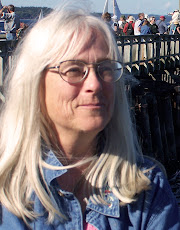 I ran into a parent of two former students of mine at the grocery store yesterday. I asked about the boys, and remarked that they must be getting to the age (at about 6 and 7 years old) where they aren't really sure wether to believe in Santa. She said Santa is real at her house. A friend informed the boys that there is really no such thing as Santa. It's only your parents pretending. Without skipping a beat, the younger answered, "Maybe Santa doesn't come to your house. He doesn't waste his time on people who don't believe in him."
I ran into a parent of two former students of mine at the grocery store yesterday. I asked about the boys, and remarked that they must be getting to the age (at about 6 and 7 years old) where they aren't really sure wether to believe in Santa. She said Santa is real at her house. A friend informed the boys that there is really no such thing as Santa. It's only your parents pretending. Without skipping a beat, the younger answered, "Maybe Santa doesn't come to your house. He doesn't waste his time on people who don't believe in him." Like a small child, I wonder every year, what is Christmas really about THIS year? I turn to stories for clues.
My very most favorite Christmas story of all time is Trina Schart Hyman's "How Six Found Christmas". I use it in the classroom to get children thinking about the sounds, smells, tastes, sights, and textures of the Christmas season, and I really love the way it ends: "Christmas is not only where you find it; it is what you make it."
My next favorite Christmas story is "Star Mother's Youngest Child" by Louise Moeri, also illustrated by Trina Schart Hyman. When the young star comes down to earth to experience Christmas here for the first time, he prods the first person he meets, a poverty stricken, grumpy, old woman, into celebrating with him. Their Christmas is simple, but "it is enough".
+and+Amelia+small.jpg)



